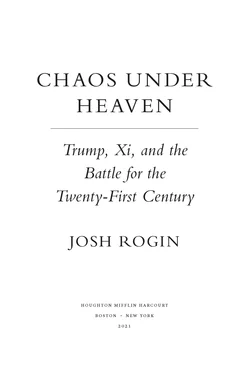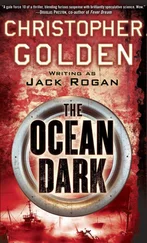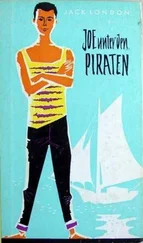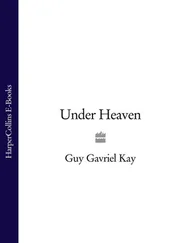On August 23, Beijing released its plan to formally retaliate against Trump’s early August tariffs, in addition to the currency moves, which included upping its tariffs on $75 billion of US goods. The Chinese counterattack hit automobiles hardest, with a tariff of 42 percent. Xi, knowing that many of Trump’s voters were also in the manufacturing sector, was going straight for the jugular.
Trump reacted angrily and promised on Twitter a re-retaliation by raising his tariffs on the first $250 billion of Chinese goods from 25 to 30 percent and raising the tariffs on the new $300 billion worth of Chinese goods from 10 to 15 percent. The president also went on a Twitter rant in which he declared, “Our great American companies are hereby ordered to immediately start looking for an alternative to China, including bringing . . . your companies HOME.”
The president had just announced a new policy of decoupling the two largest economies in the world as a threat—and seemingly on a whim.
After firing off the tweet, Trump boarded Air Force One for the meeting of the leaders of the Group of 7 (G7) countries in Biarritz, France, where I had arrived the day before. If the previous few days were any indication, it was going to be a wild weekend.
The France Fiasco
Trump had treated the ritual of the G7 summit—and the G7 itself—with a mix of disregard and disdain. He often referred to this gang of the seven leading Western democracies—Canada, France, Germany, Italy, the United Kingdom, Japan, and the United States—as “an outdated group of countries” that no longer reflected the reality of world power. He never stopped trying to bring Russia back in, after it was expelled following its invasion of Ukraine. Trump’s behavior at all international summits was generally awful, but the G7 really brought out the worst in him.
At the 2018 G7 summit in Charlevoix, Canada, Trump bickered with his world leader counterparts over the joint statement and then infamously withdrew the United States from that joint statement on the plane ride leaving Canada, because he didn’t like how Canadian prime minister Justin Trudeau had talked about him on televis ion. Trump didn’t even want to go to the 2019 summit, hosted by French president Emmanuel Macron. “Trump was wildly unenthusiastic about attending yet another G-7 after the fun at Charlevoix in 2018, and several times told me and others he would arrive late and leave early,” John Bolton wrote in his book. “Trump was so uninterested in the G-7 it was hard for [Larry] Kudlow and me to schedule a briefing for him.”
By the time Trump arrived in France on August 24, the media was all over his sudden call for US companies to start leaving China. But Trump didn’t mind the outrage; rather, he minded that some news outlets said he didn’t have the authority to order such a drastic maneuver. After Air Force One touched down, Trump tweeted that the “Fake News Reporters” were wrong to say he couldn’t order US companies to leave China, citing the Emergency Economic Powers Act of 1977.
The main story at the G7 Biarritz summit was that Macron was quietly trying to arrange a meeting between Trump and Iranian foreign minister Javad Zarif, who was flying in secretly at Macron’s invitation. Bolton and others worked successfully to thwart that idea and never forgave Macron for trying to pull it off without telling them. But that alone wasn’t going to satiate the hundreds of reporters from around the world who had traveled to Biarritz for the event. And Trump insisted on doing a press conference before each bilateral meeting he had with the other heads of state. He was asked several times about the China controversy he had just ignited. And each time he answered, he made the predicament worse.
On the morning of the 25th, Trump was asked whether he was having second thoughts about his threats to raise tariffs on China just a few days earlier. The markets were reacting badly to his bombastic tweets and threats. “Yeah, sure, why not?” he said. “Might as well. Might as well. I have second thoughts about everything.”
The press immediately reported that Trump had reversed himself. The markets jumped at the news—but then dropped again when White House press secretary Stephanie Grisham said those comments were “misinterpreted” and Trump actually meant that he had had second thoughts “because he regrets not raising the tariffs higher.”
Kudlow and Mnuchin were sent to the hotel where the American press was headquartered on a public relations clean-up mission. Kudlow said Trump had trouble hearing the question. But Trump was clearly trying to back down and calm the markets. At his next open press event, he said, “Actually, we’re getting along very well with China right now. We’re talking.”
A few hours tater in Beijing, Liu He, the lead Chinese trade negotiator, just happened to be giving a speech at the Smart China Expo in Chongqing and indirectly referred to Trump’s bombastic tweets. Liu said that China “resolutely opposes escalation of the U.S. trade war” and prefers “calm negotiations.” This was clearly meant as a criticism of Trump’s statements. But Trump misinterpreted it as a concession, focusing on the world “calm.”
Trump praised Liu’s comments at his next Biarritz press conference. “Very big things are happening with China,” Trump said, sitting next to Egyptian president Abdel Fattah el-Sisi. “You probably read the breaking news a little while ago that they want to make a deal—they just came out—and they want calm. And that’s a great thing, frankly. And one of the reasons that he’s a great leader—President Xi—and one of the reasons that China is a great country is they understand how life works.”
Trump became fixated on the comments by Liu, which he had misunderstood and was now repeatedly misrepresenting. Trump said during a news conference with Macron, “I think they want to make a deal very badly. I think that was elevated last night. The vice chairman of China came out, he said he wants to see a deal made.” He also said the Chinese had called to relay the message, but Trump just didn’t realize Liu was making a public speech and there had been no direct outreach.
The president had created at least three different competing news cycles in three days and manufactured a controversy only to back away from it, sending the markets up and down—for no reason. Trump’s brinksmanship had escalated into total confusion, but the end result was that the president was still looking for a deal. So he sent his negotiating team back to work.
“Phase One”
In October, Liu He came to Washington and met with Trump in the Oval Office. After the meeting, Trump announced that a “Phase One” deal was all but struck. He didn’t reveal the details of the near-complete deal, but he broadly claimed the terms would represent real progress on reducing China’s theft of intellectual property and forced transfer of US technology, while also noting that “the banks and all of the financial services companies will be very, very happy with what we’ve been able to get.”
In fact, the Phase One agreement would take months longer to play out, and even then Trump officials would caution that it was only a down payment on fixing the imbalances in the US-China economic and trade relationship. By calling it the “Phase One” deal, Lighthizer and Mnuchin were conceding that it was incomplete and promising to start negotiations on a “Phase Two” as soon as possible. Nobody thought that would really happen, unless or until Trump was reelected. The actual terms of the new trade agreement remained a closely held secret for weeks.
The uncertainty about the deal continued because the text remained missing in action, under the explanation that the translation was taking a long time. There was some planning to release it at the next G20 summit in Chile in November, when Trump and Xi could meet and maybe even have a signing ceremony. But that summit was canceled due to violent unrest on the Chilean streets. Meanwhile, every time Trump spoke publicly about the deal, he said something different about whether it was actually complete, confusing everyone.
Читать дальше











